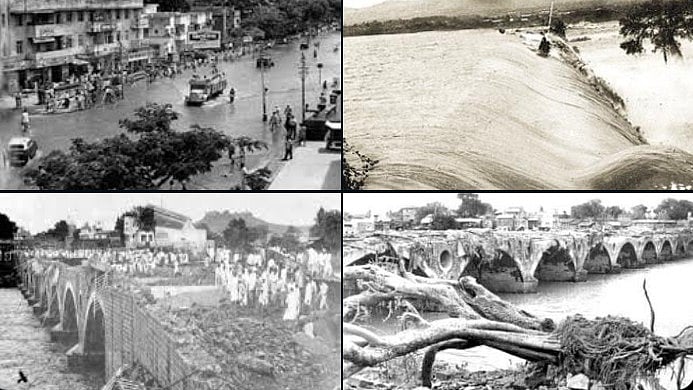July 12, 1961: 64 Years On, Pune Still Remembers Panshet Dam Horror
The entire first floor of the MES Abasaheb Garware College on Karve Road was under water. Rescue workers were using boats in the Deccan Gymkhana and Fergusson College Road areas

July 12, 1961: 64 Years On, Pune Still Remembers Panshet Dam Horror | X/@aparanjape
On July 12, 1961, Pune witnessed the most devastating disaster in the city's history – the Panshet dam burst. The resulting floods wreaked havoc, especially in low-lying central areas. According to reports, over a thousand people lost their lives, while lakhs were left homeless. Houses, factories and bridges were destroyed. The entire first floor of the MES Abasaheb Garware College on Karve Road was under water. Rescue workers were using boats in the Deccan Gymkhana and Fergusson College Road areas.
Speaking to The Free Press Journal in 2021, author Ashlesha Mahajan, who has written a book titled 12 July 1961, said she interviewed nearly 100 residents of Pune who experienced the floods first-hand. "I have worked on this book for nearly 10 years. I live in Sahakarnagar, and the people who live around me are mostly flood victims. The tragedy is always a topic of conversation in the area," Mahajan said. She added that her father-in-law was the first person who provided her with a deep dive into how the events unfolded on that cataclysmic day. "Also, if you take a stroll around the city, you will find red markings on buildings showing how high the floodwater had reached. It had always fascinated me," she said.
ALSO READ
Citing her research and post-tragedy analysis done by experts, Mahajan asserted that the Panshet dam was built in haste. "The construction of the dam began in 1957–58, and it was expected to be completed by around 1962–63. However, due to a government policy, it was decided to finish the construction work earlier than expected. The dam was still under construction when water was let into it. Also, it was the time when the Samyukta Maharashtra Movement had just concluded, and the state did not have enough resources available. We did not have steel; the dam was mainly built with mud. Plus, it had been raining continuously for a fortnight before the tragedy. Finally, the heavy downpour and water pressure brought down the walls of the dam," she said.
RECENT STORIES
-
-
-
-
-